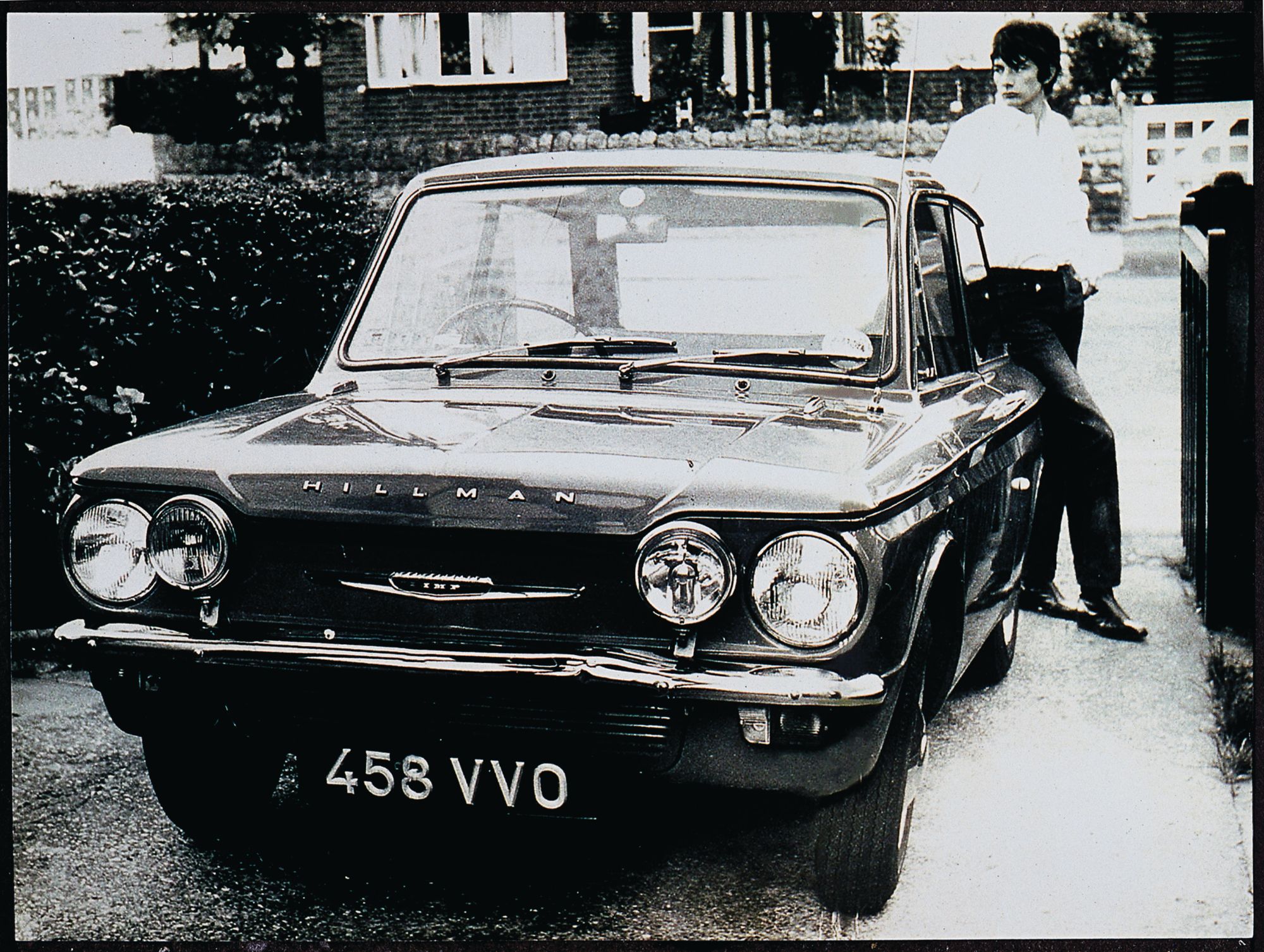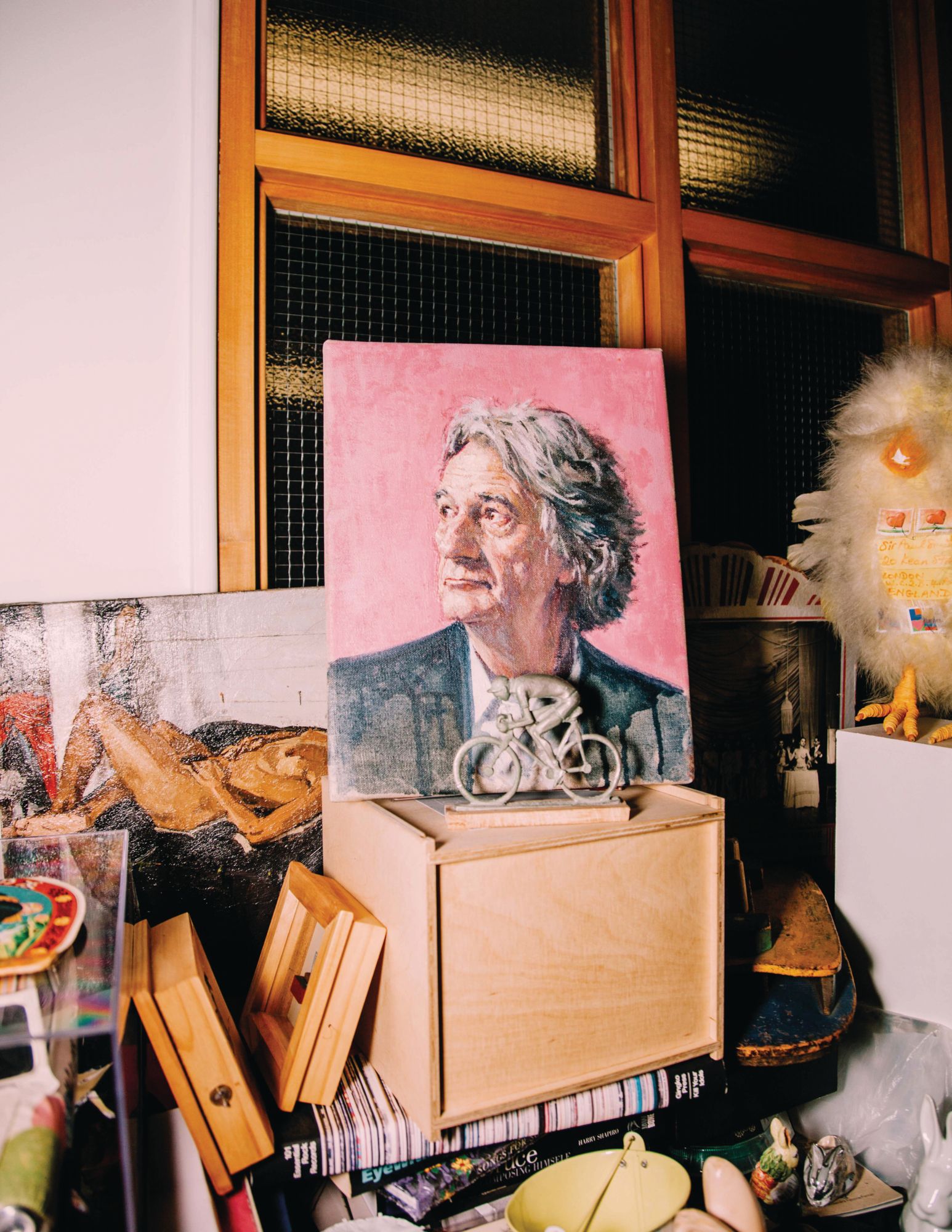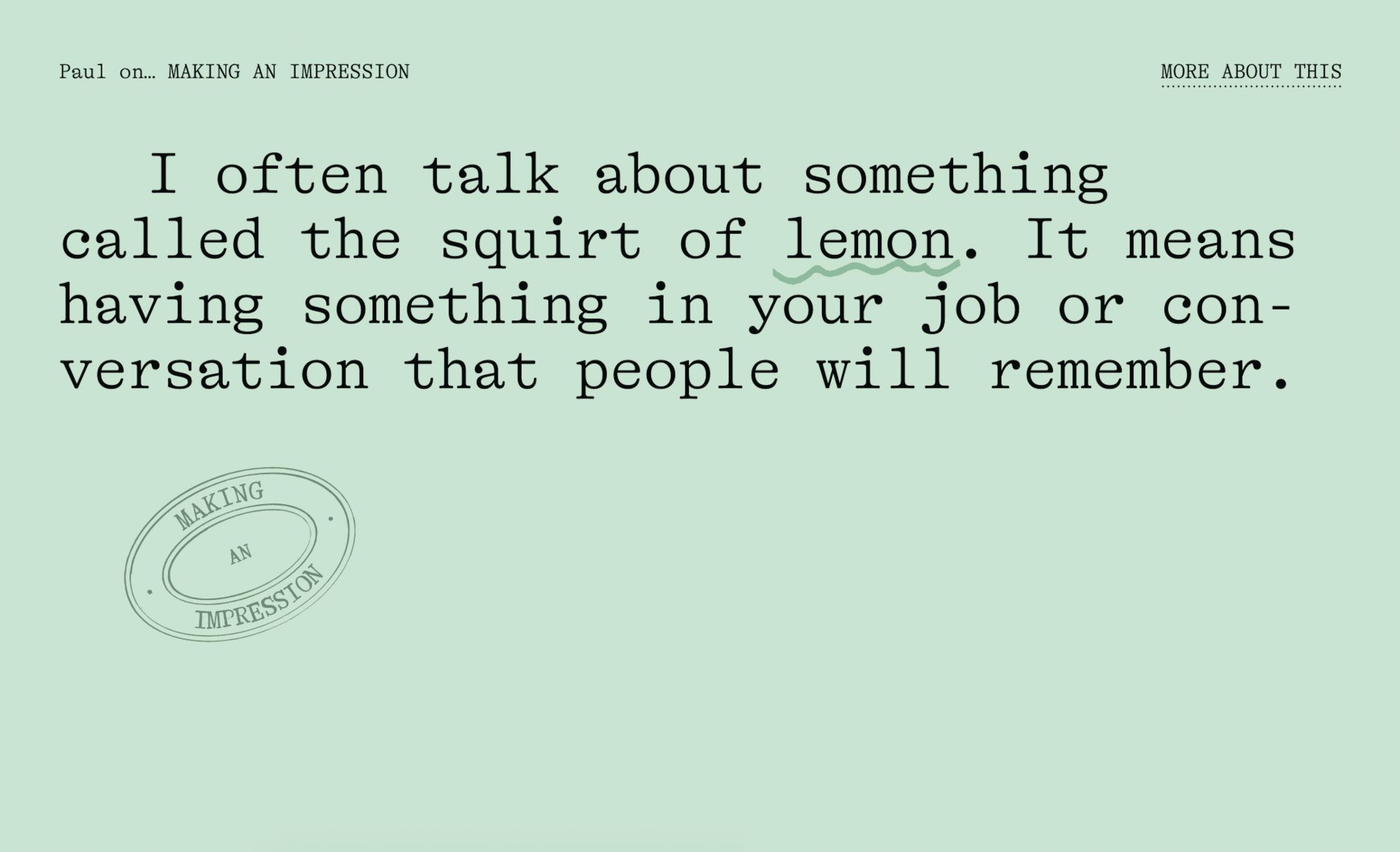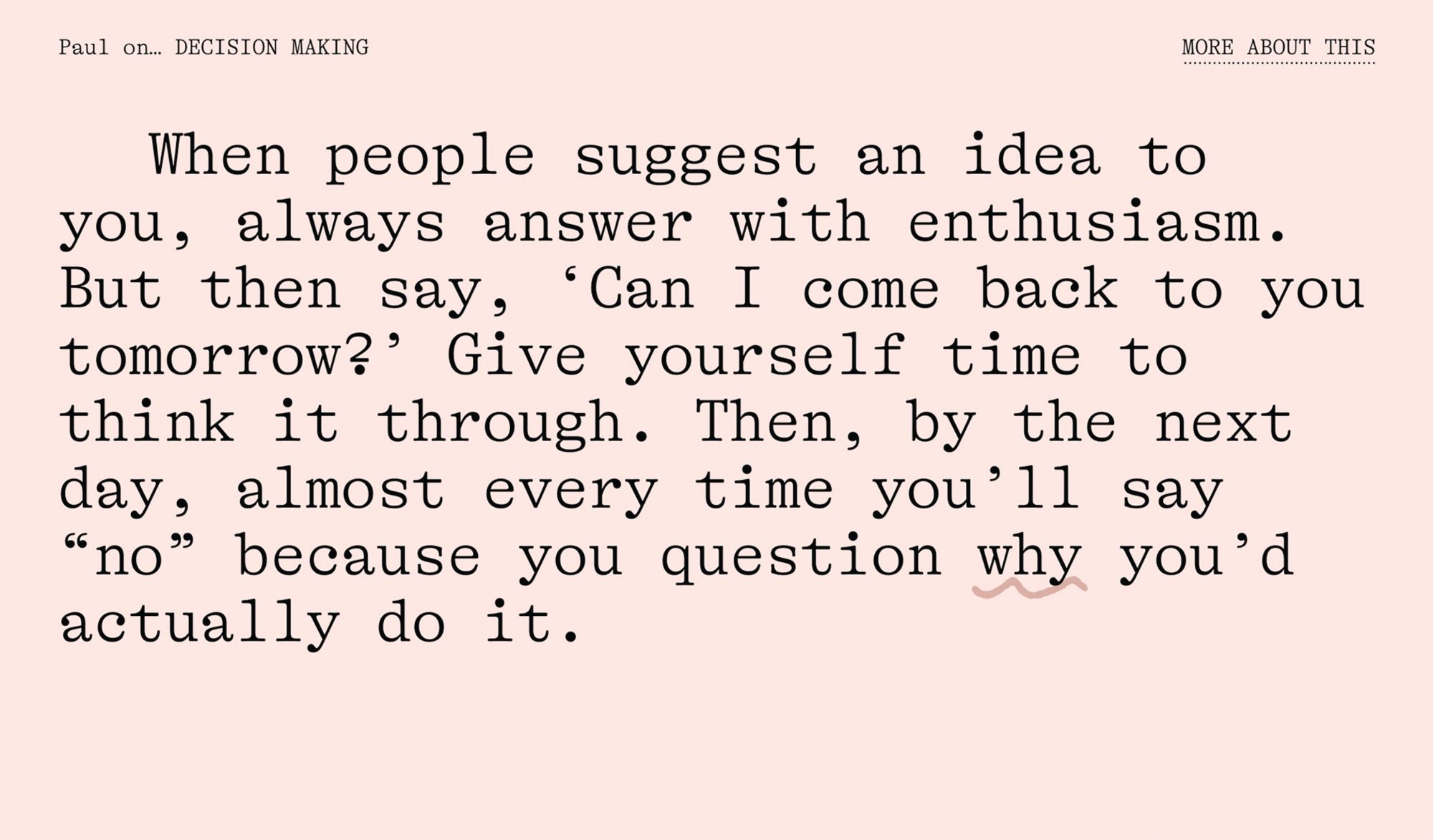Celebrating his 50th anniversary, Paul Smith launches a foundation imparting his wisdom to young talents, in the hope of cultivating good manners and good times
Paul Smith apologises for standing me up.
“Sorry about yesterday—that was a nightmare!” he says, palming his hands together in a prayer position. “It never happened to me before, but we were doing live TV to Russia and their technology was—I don’t know what happened. I was horrified when I had to cancel on you. I’m so sorry.”
Smith, as his legions of friends and fans know, takes good manners very seriously. The legendary 74-year-old British designer, renowned for his impeccably tailored suits imbued with a touch of humour, beams at me through the screen behind his tortoise-shell spectacles, wearing a navy turtleneck under a windowpane check suit jacket of his own creation.
Chances are, most men have owned something—be it a sharply cut suit with lime-coloured stripes, or a cardholder or a pair of socks with his iconic rainbow stripes—by Paul Smith, which celebrates its 50th anniversary this year. “Can you believe it? 50 years!” he exclaims. “It’s amazing to have 50 years in fashion; even many bands, musicians, restaurants, designers might have two or three years’ success, and suddenly people are not so interested in them any more.”
See also: Meet Tomo Koizumi, The Designer Behind Fashion’s Buzziest Gowns


Lasting Legacy
In the Eighties, Smith pioneered a technique of using photographic prints on fabric, so to mark this milestone, he brought back his most popular, and quirkiest, prints of spaghetti and green apples in a capsule collection, adapting them to modern shapes like bucket hats and hoodies. Though Queen Elizabeth II awarded Smith, who was knighted in 2000, a Companion of Honour—one of the highest honours in the land, only given to a maximum of 65 people—last October, 2020 was hardly the best for celebrating a jubilee.
"The sad thing for me is this is the first year in 50 years that we’ve lost money—it’s unprecedented times,” he says during our Zoom call in November, noting that people working from home in their sweats has made a dent on his livelihood, and that of all designers known for tailored suits. But he shrugs, refusing to let circumstance soil his mood. “I think it’s just temporary; it’ll go back, I’m sure. I think when people want to go out again, they’ll want to dress up and look special.”
See also: Meet Stephen Jones, The Man Behind Christian Dior's Most Memorable Hat Designs










